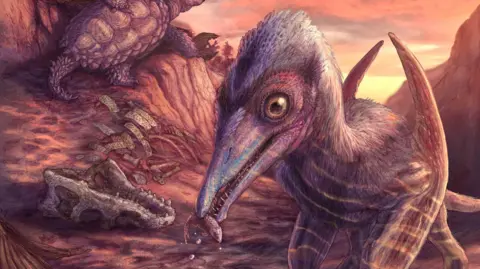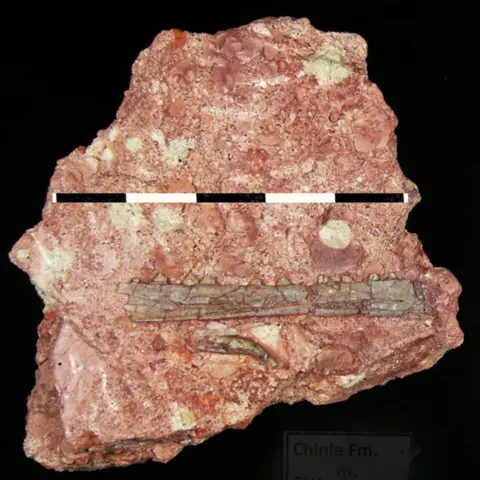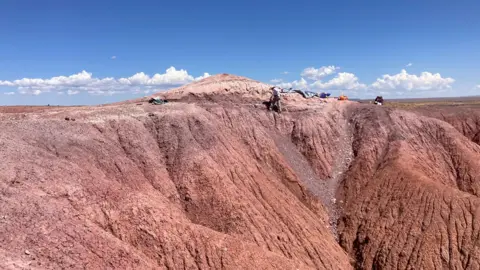Science correspondent, BBC Information
 Smithsonian
SmithsonianScientists have found a brand new species of pterosaur – a flying reptile that soared above the dinosaurs greater than 200 million years in the past.
The jawbone of the traditional reptile was unearthed in Arizona again in 2011, however trendy scanning methods have now revealed particulars exhibiting that it belongs to a species new to science.
The analysis crew, led by scientists on the Smithsonian’s Nationwide Museum of Pure Historical past in Washington DC, has named the creature Eotephradactylus mcintireae, which means “ash-winged daybreak goddess”.
It’s a reference to the volcanic ash that helped protect its bones in an historic riverbed.
 Suzanne McIntire
Suzanne McIntireParticulars of the invention are revealed within the journal Proceedings of the Nationwide Academy of Sciences.
At about 209 million years outdated, that is now believed to be the earliest pterosaur to be present in North America.
“The bones of Triassic pterosaurs are small, skinny, and infrequently hole, in order that they get destroyed earlier than they get fossilised,” defined Dr Kligman.
The location of this discovery is a fossil mattress in a desert panorama of historic rock within the Petrified Forest Nationwide Park.
Greater than 200 million years in the past, this place was a riverbed, and layers of sediment regularly trapped and preserved bones, scales and different proof of life on the time.
The river ran via the central area of what was the supercontinent of Pangaea, which was shaped from all of Earth’s landmasses.
The pterosaur jaw is only one a part of a group of fossils discovered on the identical web site, together with bones, enamel, fish scales and even fossilised poo (also called coprolites).
Dr Kligman stated: “Our means to recognise pterosaur bones in [these ancient] river deposits suggests there could also be different comparable deposits from Triassic rocks all over the world which will additionally protect pterosaur bones.”
 Ben Kligman
Ben KligmanFinding out the pterosaur’s enamel additionally offered clues about what the seagull-sized winged reptile would have eaten.
“They’ve an unusually excessive diploma of damage at their suggestions,” defined Dr Kligman. suggesting that this pterosaur was feeding on one thing with arduous physique components.”
The almost certainly prey, he instructed BBC Information, have been primitive fish that will have been coated in an armour of boney scales.
Scientists say the positioning of the invention has preserved a “snapshot” of an ecosystem the place teams of animals that are actually extinct, together with large amphibians and historic armoured crocodile kin, lived alongside animals that we may recognise right this moment, together with frogs and turtles.
This fossil mattress, Dr Kligman stated, has preserved proof of an evolutionary “transition” 200 million years in the past.
“We see teams that thrived later dwelling alongside older animals that [didn’t] make it previous the Triassic.
“Fossil beds like these allow us to ascertain that every one of those animals really lived collectively.”


